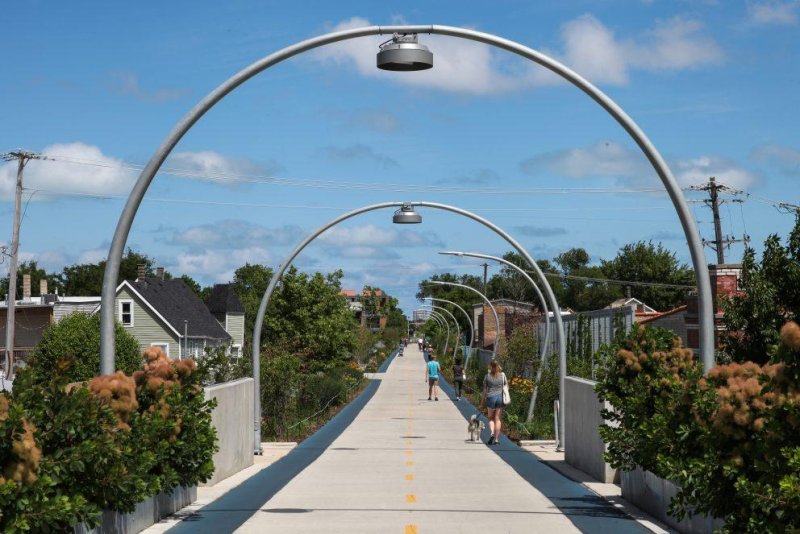New research suggests green space like the 606, an elevated trail in Chicago, can help diminish crime in nearby neighborhoods. Photo by Brandon Harris/Clemson University
Feb. 24 (UPI) -- New research suggests urban green space like parks and greenways may play a role in diminishing crime.
When scientists analyzed crime statistics from a diverse array of Chicago neighbors both before after the construction of the Bloomingdale Trail, a 2.7-mile elevated greenway known as the 606, they found a reduction in crime in neighborhoods closest to the trail.
Researchers compared neighborhoods with similar socioeconomic conditions and crime rates prior to the Bloomingdale Trail installation. The results of the study were published this week in the journal Environment and Behavior.
"Rates of violent, property and disorderly crime all fell at a faster rate in neighborhoods along the 606 than in similar neighborhoods nearby," lead study author Brandon Harris said in a news release. "The decrease was largest in lower-income neighborhoods along the western part of the trail."
Harris is a Chicago resident and former intern at the Chicago Park District. His investigation of crime and the 606 was part of his dissertation at Clemson University.
The study of the relationship between human health and green space is an increasingly popular research topic among urban policy makers and sociologists. But isolating the drivers of positive change isn't easy.
Scientists believe the presence of green space bring can about change in a variety of ways.
"We know that having a well-designed greenway can increase residential and commercial activity, bringing in more foot traffic that pushes out crime in the neighborhood," said co-author Lincoln Larson, a researcher at North Carolina State University. "People along the trail may also be having more positive interactions and feeling a greater sense of community among neighborhoods, which prompts them to take ownership in the trail."
Larson said the growing body of research on the social benefits of green space suggest the presence of trees and bushes alone aren't enough.
"It's not just the presence of parks that matters," he said. "Design and programming for parks is also critical, especially considering some of the troubling crime trends in Chicago over the past year."
Larson also said green space installations must be inclusive. The effects on human and community health won't matter if revitalization efforts push vulnerable communities out of the neighborhoods that stand to benefit most from new green space.
CORRECTION: A Previous version of this story incorrectly identified the 606 as the Bloomington Trail. It is the Bloomingdale Trail.















